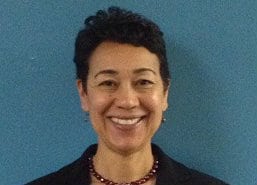The momentous occasion of high school graduation —being one of hundreds dressed in long robes to walk across the stage and receive a diploma—feels like a true accomplishment. Students receiving alternative credentials, however, miss the ordered ceremony, pomp and circumstance, and motivational speeches even if they also have demonstrated a mastery of content and level of perseverance and effort. Sometimes, they never even receive an official “diploma,” but rather, must settle for a “certificate.”
Although many academics have attempted to disqualify the GED as a valued credential, earning a passing grade on the GED or other tests * used as an alternative for secondary school completion can improve the quality of life, confidence, and opportunities for a disenfranchised student. While GED earners do not experience the same high level of employment and yield significantly lower yearly wages than high school graduates, “GED earner’s yearly wages are 8% higher than dropouts.” Unfortunately, however, over a lifetime, these economic differences occasionally disintegrate to statistical insignificance because of differences in higher education attainment beyond high school and occupation type.
The GED alone is not enough to propel a student to success; after earning a passing score, “fewer than 5 percent of GED recipients go on to enroll in college or other adult education programs.” Because postsecondary education is an essential means to improving life outcomes, students must use alternative secondary credentials as a stepping stone rather than as the end of the road.
If you’re curious how your state deals with GEDs, the map above is the first of its kind to compile and categorize the way states issue a GED credential.
However, not all GED credentials are viewed as equal. The GED isn’t as respected as a high school diploma, and its perceived low social value could be a main reason why the credential lacks impact and is underutilized. Each state has the option to name and distribute alternative secondary credentials as they choose. While some states, such as Maryland, New Mexico, and Pennsylvania, give GED earners “State High School Diplomas,” others, such as South Dakota, allots “GED certificates” from the Department of Labor and Regulation. The former is associated with a path bending towards higher education and adult success, while the latter “certificates” are often viewed as a track toward lower-wage, lower-skill jobs. Perceptions are powerful, and certificates or GED certificates carry a stigma that they require less effort and educational competency.
Discouraging language regarding alternative secondary school credentials can disappoint and dishearten students, who see the GED as an opportunity for academic success within a system from which they have felt excluded and disenfranchised. Adjusting the name and language around the credential earned for alternative high school completion could change the way outside entities perceive student’s GED credentials.
The words “high school diploma” mean something significant to both the student receiving the degree and the outside world perceiving the document. These words add a level of validity to the students’ accomplishment and assist them in continuing their academic and professional goals. Yet, if a student earns a “GED certificate,” their credential may carry stigma that is difficult to overcome.
Not every student should utilize the GED in place of high school, but at the same time, we should recognize the GED as a viable option for some students. The acceptance, respect, and usability of the GED are essential to the success of students for whom the GED is their self-perceived best academic option. As we continue to debate the GED’s value in terms of reflecting academic mastery, we still want students who earn the credential to experience it as meaningful, significant, and useful in its name and purpose.
* In this post, I use the GED as a generalized term for means (tests) by which students can earn an alternative secondary credential. This includes primarily the GED, TASC, and HiSET tests.
Mikaela Zetley is a Research/Policy Intern at the American Youth Policy Forum.




